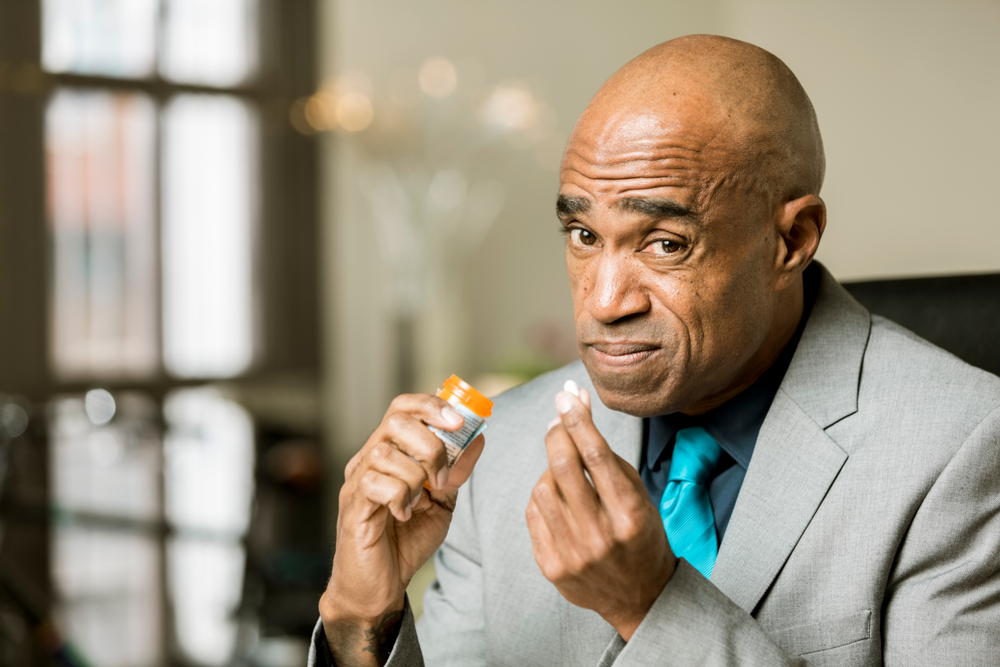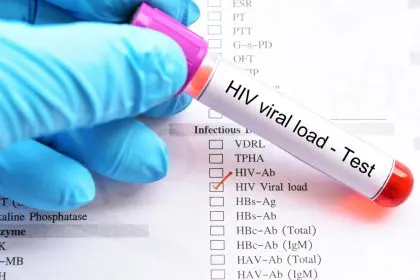Statins rank among the most prescribed medications worldwide, with millions taking these cholesterol-lowering drugs daily to reduce their cardiovascular risk. While these medications effectively lower LDL (bad) cholesterol and prevent heart attacks and strokes, growing concerns about their potential side effects warrant a balanced understanding of their risk profile.
How statins work in your body
Statins operate by inhibiting an enzyme called HMG-CoA reductase, which plays a central role in cholesterol production in your liver. By blocking this enzyme, statins reduce the amount of cholesterol your body manufactures naturally, particularly low-density lipoprotein (LDL) cholesterol—the type associated with increased heart disease risk.
Beyond lowering cholesterol, statins appear to reduce inflammation in blood vessel walls and stabilize existing cholesterol plaques, making them less likely to rupture and cause blockages. This dual action explains why statins benefit even some people with normal cholesterol levels but elevated inflammatory markers.
The most commonly prescribed statins include atorvastatin (Lipitor), rosuvastatin (Crestor), simvastatin (Zocor), and pravastatin (Pravachol). These medications vary in potency, with atorvastatin and rosuvastatin typically considered more powerful than others in the class.
The 7 most common statin side effects
Despite their proven cardiovascular benefits, statins can cause several side effects that range from mild inconveniences to more serious concerns:
- Muscle pain and weakness: The most frequently reported statin side effect involves muscle symptoms, affecting approximately 5-10% of users. Most experience mild discomfort, typically felt as soreness, tenderness, or weakness, particularly in the shoulders, upper arms, hips, and thighs. This myalgia often occurs symmetrically on both sides of the body and may worsen with exercise.
- Liver enzyme elevation: Statins can increase liver enzyme levels in approximately 0.5-3% of users. While these elevations rarely progress to serious liver damage, regular monitoring through blood tests during the first year of treatment helps identify potential issues early. The risk appears higher with more potent statins taken at higher doses.
- Increased blood sugar: Evidence indicates that statins modestly raise blood sugar levels and slightly increase the risk of developing type 2 diabetes, particularly in individuals already predisposed to the condition. Research suggests an approximately 9% increased relative risk of diabetes diagnosis among statin users.
- Cognitive effects: Some statin users report memory problems, confusion, or brain fog while taking these medications. These cognitive effects appear more common with lipophilic (fat-soluble) statins like atorvastatin and simvastatin that more readily cross the blood-brain barrier than hydrophilic (water-soluble) statins like pravastatin and rosuvastatin.
- Digestive system disturbances: Gastrointestinal symptoms including constipation, diarrhea, nausea, gas, and stomach pain occur in some statin users. These digestive issues typically emerge when starting treatment and often resolve with continued use.
- Sleep disruption: Some people experience sleep difficulties while taking statins, including insomnia, strange dreams, or nightmares. Taking the medication in the morning rather than evening sometimes alleviates these sleep disturbances.
- Rhabdomyolysis risk: This rare but serious condition involves severe muscle breakdown that releases proteins into the bloodstream, potentially damaging kidneys. While affecting fewer than 1 in 10,000 statin users, rhabdomyolysis requires immediate medical attention when symptoms like extreme muscle pain, weakness, fever, and dark urine appear.
Factors increasing your risk of statin side effects
Several factors can heighten your susceptibility to statin-related adverse effects:
Advanced age: Adults over 80 appear more vulnerable to muscle-related side effects, possibly due to naturally decreasing muscle mass and altered medication metabolism.
Female gender: Women report statin-related muscle symptoms more frequently than men, particularly smaller-framed women.
Genetic factors: Variations in genes affecting drug metabolism and muscle function can increase sensitivity to statin effects. Familial history of statin intolerance suggests possible genetic predisposition.
Medication interactions: Certain medications significantly increase statin blood levels when taken concurrently. These include some antibiotics (erythromycin, clarithromycin), antifungals (fluconazole, itraconazole), HIV medications, and heart drugs like amiodarone and verapamil.
Vitamin D deficiency: Low vitamin D levels correlate with increased risk and severity of statin-related muscle symptoms. Correcting deficiency sometimes resolves these issues.
Medical conditions: Kidney or liver disease, hypothyroidism, diabetes, and neuromuscular disorders all increase sensitivity to statin side effects due to altered drug processing or underlying tissue vulnerability.
Exercise patterns: Intensive exercise combined with statin therapy sometimes triggers or worsens muscle symptoms in susceptible individuals, particularly when starting a new exercise regimen.
Navigating the decision: When benefits outweigh risks
For most individuals with established cardiovascular disease or high cardiovascular risk, the benefits of statin therapy substantially outweigh potential risks. Research consistently demonstrates significant reductions in heart attacks, strokes, and cardiovascular mortality among appropriate candidates.
Those who benefit most decisively include:
Secondary prevention patients: People who have already experienced a heart attack, stroke, or other cardiovascular event gain substantial protection against recurrence with statin therapy, with risk reductions of approximately 25-35%.
Diabetes patients: Adults with diabetes, especially those over 40 with additional risk factors, show significant cardiovascular benefit from statins, reducing their already elevated heart disease risk.
High-risk primary prevention: Individuals without known cardiovascular disease but with multiple risk factors including high LDL cholesterol, hypertension, smoking history, and family history of premature heart disease typically benefit from preventative statin therapy.
Genetic hypercholesterolemia: People with inherited forms of high cholesterol often require statin therapy starting at younger ages to prevent premature cardiovascular disease.
Strategies to minimize statin side effects
For those experiencing or concerned about statin side effects, several approaches may help:
Medication adjustment: Switching to a different statin sometimes resolves side effects, as each drug in this class has slightly different properties. Rosuvastatin and pravastatin generally cause fewer drug interactions and muscle symptoms than other statins.
Dose modification: Lower doses or alternate-day dosing schedules may significantly reduce side effects while still providing meaningful cholesterol reduction. Even taking a statin just twice weekly delivers substantial LDL-lowering effects in many individuals.
Coenzyme Q10 supplementation: Some evidence suggests that CoQ10 supplements may reduce statin-related muscle symptoms, as statins can lower natural CoQ10 levels in muscle tissue. While research remains inconclusive, this supplement appears generally safe.
Vitamin D optimization: Correcting vitamin D deficiency through supplementation sometimes alleviates muscle-related statin symptoms.
Timing consideration: Taking statins in the morning instead of evening may reduce sleep-related side effects, though this timing change might slightly decrease cholesterol-lowering efficacy for some statins.
Lifestyle integration: Comprehensive heart-healthy habits including Mediterranean-style diet, regular physical activity, stress management, and smoking cessation enhance statin benefits while potentially allowing lower medication doses.
Monitoring recommendations for statin users
Appropriate monitoring helps identify potential issues early while providing reassurance about medication safety:
Baseline testing: Before starting statin therapy, baseline blood tests typically include lipid profile, liver function, and sometimes creatine kinase (CK) to assess muscle enzyme levels.
Follow-up schedules: Lipid levels should be checked 4-12 weeks after starting therapy or changing doses to confirm effectiveness. Liver function tests may be performed periodically during the first year, though routine testing throughout treatment is no longer universally recommended.
Symptom awareness: Patients should promptly report unexplained muscle pain, weakness, or tenderness, particularly when severe or accompanied by dark urine. Cognitive changes, significant digestive issues, or unusual symptoms also warrant discussion with healthcare providers.
Regular medication review: Annual review of statin therapy, including reassessment of cardiovascular risk, medication adherence, and side effect experiences, helps ensure optimal treatment.
The future of cholesterol management
Emerging alternatives for those unable to tolerate statins include:
PCSK9 inhibitors: These injectable medications dramatically lower LDL cholesterol by increasing liver clearance of circulating LDL particles. While expensive, they provide an option for statin-intolerant individuals with high cardiovascular risk.
Bempedoic acid: This newer oral medication works through the same pathway as statins but activates in the liver rather than muscles, potentially reducing muscle-related side effects.
Inclisiran: This twice-yearly injectable medication uses RNA interference technology to reduce PCSK9 protein production, effectively lowering LDL cholesterol with infrequent dosing.
The decision to start or continue statin therapy involves weighing potential risks against well-established cardiovascular benefits. For most indicated patients, the protective effects against heart attack and stroke substantially outweigh the relatively small risk of significant adverse effects. Working closely with healthcare providers to monitor and manage any side effects ensures you receive appropriate cardiovascular protection while minimizing medication downsides.








